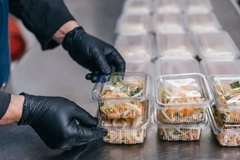DS Smith encourages US consumer holiday recycling as infrastructure advances

Americans are recycling paper more than ever before, with holiday celebrations bringing a wave of gift wraps, boxes and packaging. Willingness to recycle is supported by DS Smith, whose circular recycling infrastructure is driving industry-wide progress.
The American Forest & Paper Association (AF&PA) recently reported that last year, 65–69% of US paper available for recovery was recycled. This places paper among the nation’s most recycled materials, with current rates nearly 60% higher than in 1990 when recycling goals were first established.
DS Smith’s flagship recycling facility in Reading, US, processes more than 36,000 tons of used corrugated cardboard annually. DS Smith can collect and recycle materials into new corrugated boxes within 14 days, collaborating with distribution centers, retailers, print shops and packaging facilities. This system reduces the fiber used in its boxes by 30%, according to the company.
Keith Tornes, DS Smith’s managing director, paper and recycling, North America, says: “DS Smith’s commitment to sustainability and a circular business model is helping take many of the paper and paper packaging products used during the holidays and throughout the year and to unlock value and recover these elements for continued use.”
“We trust the findings from AF&PA point to continued consumer and industry shifts and validate our continued investment and efforts to recover and recycle more paper and paper packaging products.”
Eco-friendly holidays
A new Amazon survey conducted by the Harris Poll recently revealed that US consumers are increasingly aware of the environmental impact of their e-commerce packaging this holiday season.
Wrapping paper can be recycled if it can be scrunched into a ball and remains scrunched. However, items like tape, glittered or decorated boxes, ribbons and Christmas crackers should be disposed of separately.
AF&PA highlighted that its latest recycling rates are calculated as the amount of paper recycled as a share of the amount of paper available for recovery. The updated methodology incorporates improved estimates of net imported packaging.
The organization has also deducted an estimate of materials in recovered paper bales that are not used in manufacturing. These refinements ensure that recycling rates better reflect the materials’ true impact.











